Update (5/24/22): The summer is fast-approaching, so we figure we'd give you an update on where you can swim, kayak or fish. Parks and Recreation spokesperson Cyndi Karvaski said there have been no rule changes, so everything below stands. She added that motorized boating and sailing is still not permitted on Sloan's Lake, but non-motorized, hand-launched crafts like canoes, paddleboards and kayaks are allowed. There are no lake closures, either, but Karvaski said if the department detects any cyanobacteria or blue-green algae, lakes may temporarily close until the levels have subsided.
Stay cool, Denverites.
Our original story follows below.
Denver is... dry. As Esteban observed looking at the map above, there's not a lot of water in Denver.
Technically there are 18 public lakes, ponds and reservoirs in Denver county, and 11 public waterways (streams, creeks, rivers and gulches). The key word there is public. Not all of the blue on a map of Denver is water the average Denverite can access for recreation, or even water they'd want to access.
Some large bodies of water that appear on a map of Denver aren't lakes, officially. Many are water-quality ponds. DIA, for instance, has a couple of drainage ponds. Some ponds monitored by the Colorado Department of Transportation acted as storm water detention for the I-70 highway project. Denver Public Works uses a few ponds and lakes to aid in storm water drainage. And there are a few bodies of water on privately owned land, like the Riviera Lake.
All 29 official, publicly accessible lakes and streams in Denver County are owned and maintained by Denver Parks and Rec, with some monitoring assistance from other organizations. Cincere Eades, the department's principal planner, said the lakes and waterways don't just serve a recreational purpose. They serve as habitats for fish and wildlife. Some have irrigation ditches running through them.
"Our lakes are part of our watershed and storm water system," she said. "So our lakes also serve as storm water detention."
So which bodies of water can you actually recreate in?

Fishing
Fishing is allowed in all 29 of Denver's public lakes and waterways, as long as you don't plan to keep what you catch.
"You can fish in any body of water. We recommend catch and release," said Jon Novick, an environmental program administrator for water quality with the Denver Department of Public Health and Environment. "It's probably not a good idea to eat anything that comes out of an urban lake or out of one of our streams."
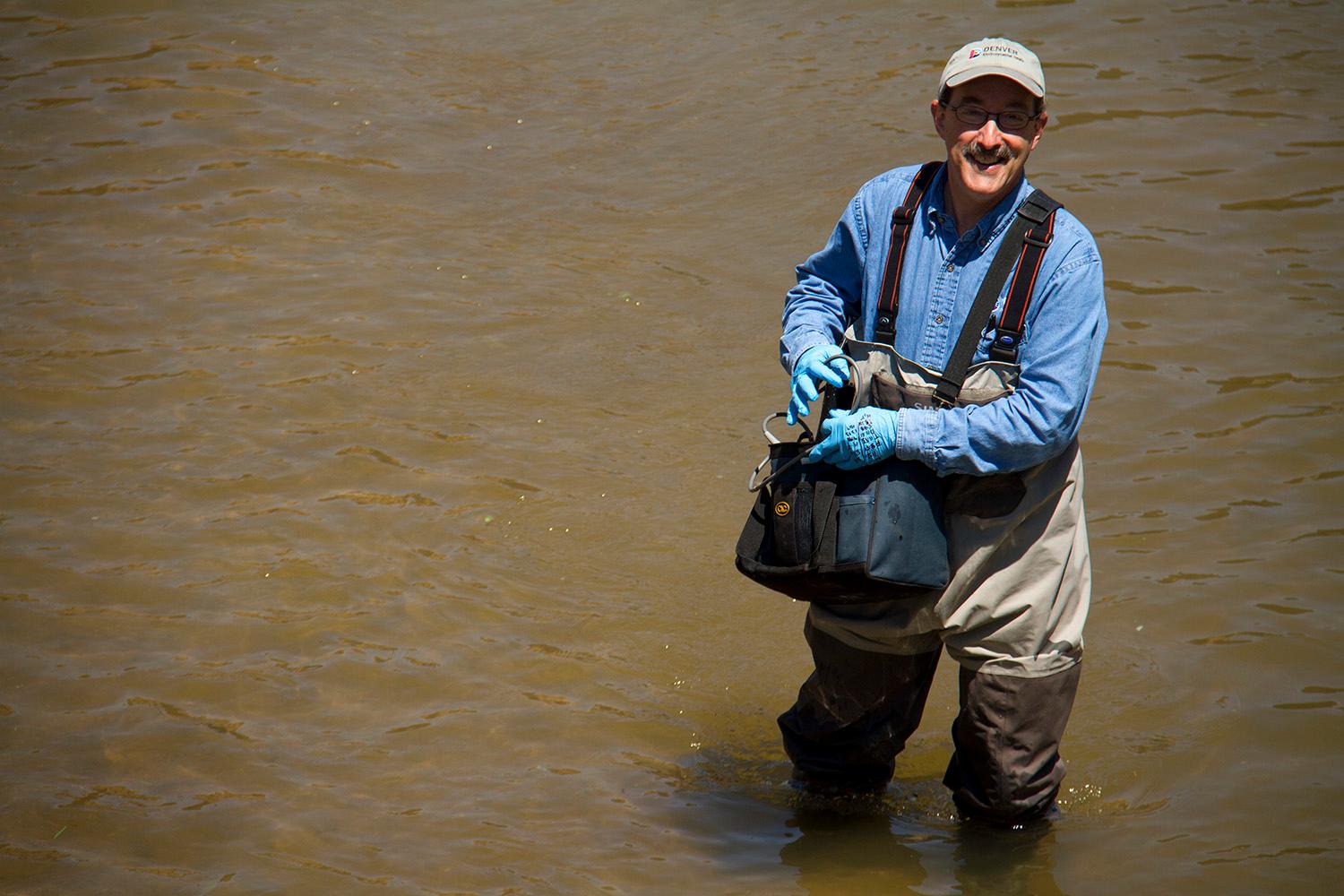
Kevin J. Beaty/Denverite
Swimming
Novick said that no body of water within Denver has been designated as "swimmable" and we have no swimmable beaches, which are paid-entry natural swimming areas designated by the state (and regularly monitored for e. coli).
"The concern with the water quality is if you're swimming, you could swallow water, which might have elevated levels of bacteria, and it could make you sick," he said.
While swimming is not permitted in any of the city's lake and waterway systems, wading is. Novick explained that's because of the reduced risk of swallowing the water. Still, he said to wade at your own discretion.
"When it's warm, streams can have pretty elevated levels of bacteria. And it can be a risk," he said.
Novick doesn't necessarily advise wading in streams, but suggested that if you do you should avoid going in with open cuts or sores. Be sure to wash your hands after getting out of the water and before eating or drinking anything to avoid contaminating your food. He also said DDPHE regularly monitors for harmful algal blooms, so be on the lookout for signs warning of such blooms, especially if you have a pet. Dogs are especially at risk of getting sick, because they might drink the water, or lick their fur after getting out.
Boating
All public streams, as well as five of Denver's public lakes, allow for the use of hand-launched watercraft -- essentially, kayaks, rafts, SUPs, canoes, tubes, pedal boats and similar small, non-motorized vessels. Here are the lakes and waterways that allow the use of these kinds of craft:
Ferril Lake
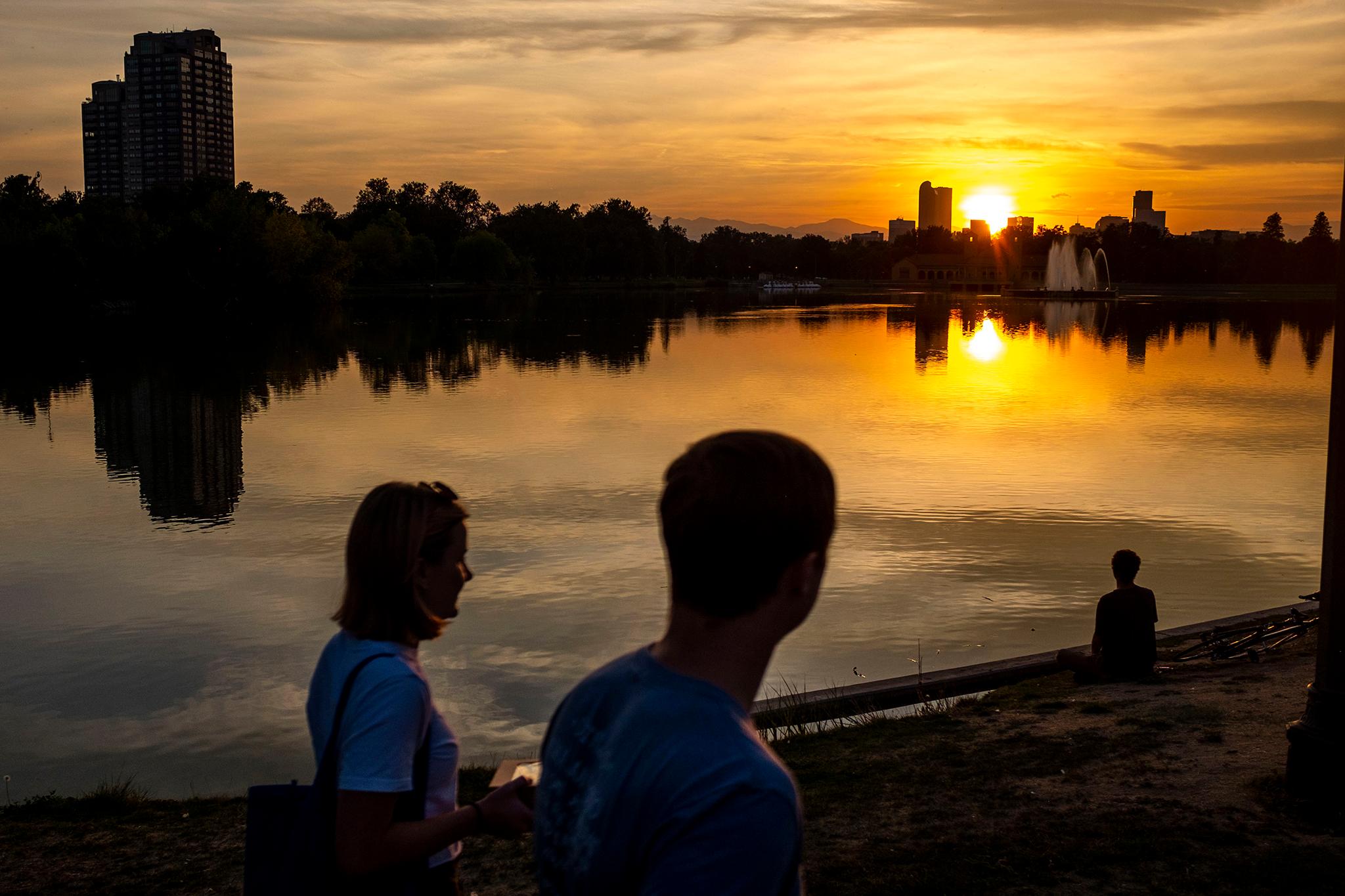
If you've spent time in City Park, you've likely seen people taking swan boats out on Ferril Lake. The 22-acre body of water welcomes visitors to rent pedal boats from its seasonal boathouse, which reopened April 3. You can also bring your own small craft boat, or fish for bass and catfish.
Smith Lake
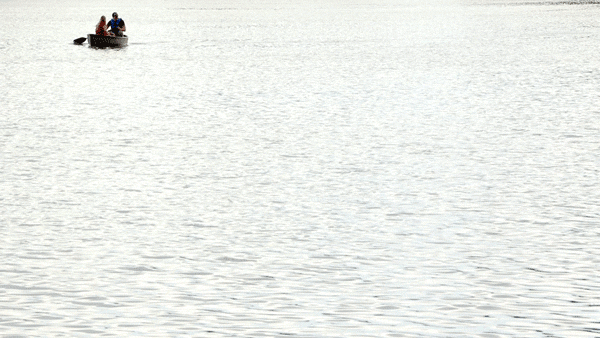
Kevin J. Beaty/Denverite
Washington Park is home to this 15-acre lake. Here, you can fish for trout, rent a small pedal boat from Wheel Fun Rentals, or bring your own kayak or canoe.
Rocky Mountain Lake
This lake in the Berkeley area near Regis University runs 25 feet deep and 23 acres in area. While there's no boathouse here, you're welcome to bring your own non-motorized watercraft. You're also welcome to fish.
Berkeley Lake
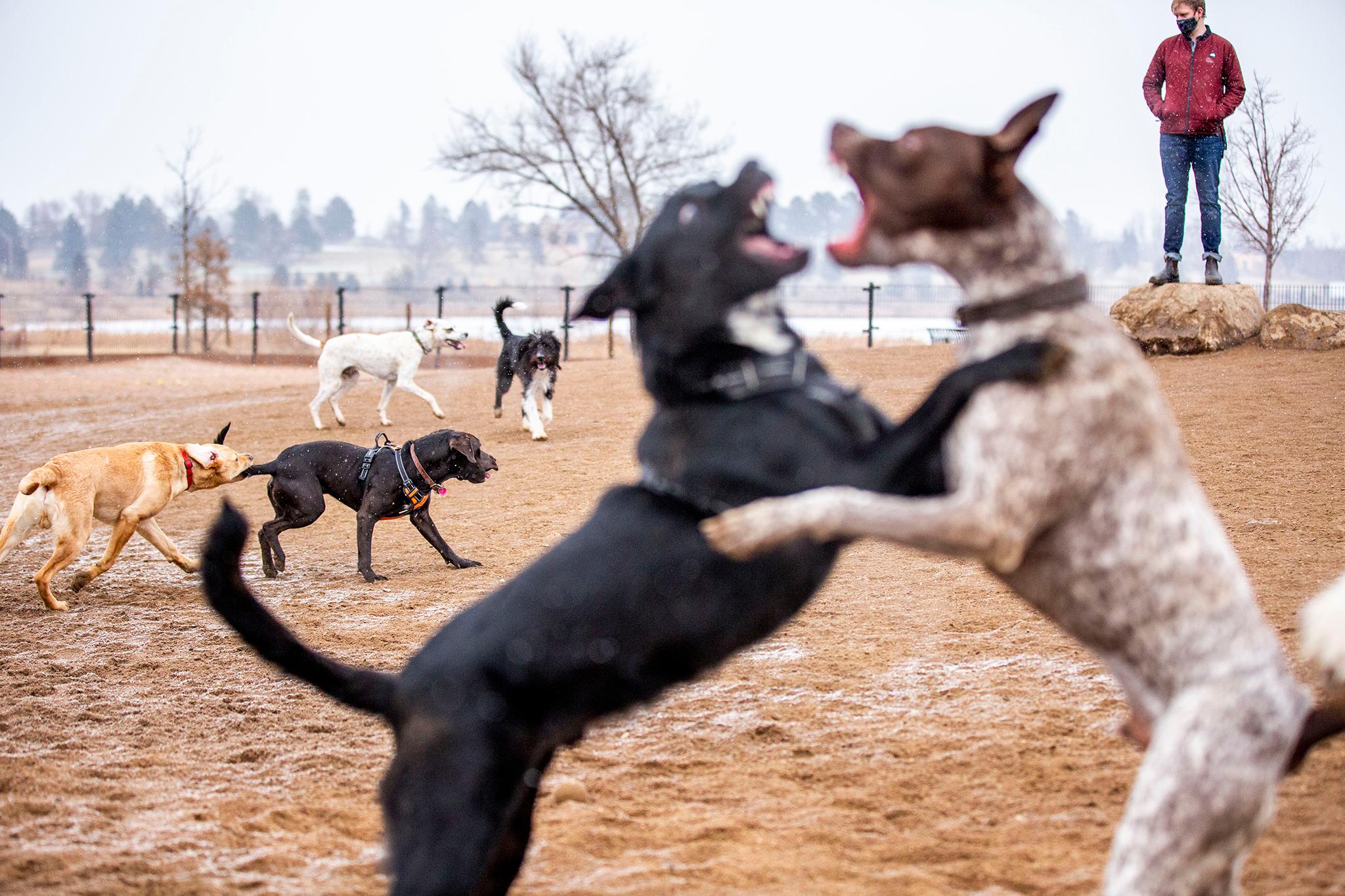
This 30-acre lake in Regis offers views of both the mountains and Lakeside Amusement Park. It's also adjacent to the Berkeley Dog Park, so there are lots of opportunities for dog spotting! Visitors can fish and bring their own hand-launched watercrafts.
Sloan's Lake
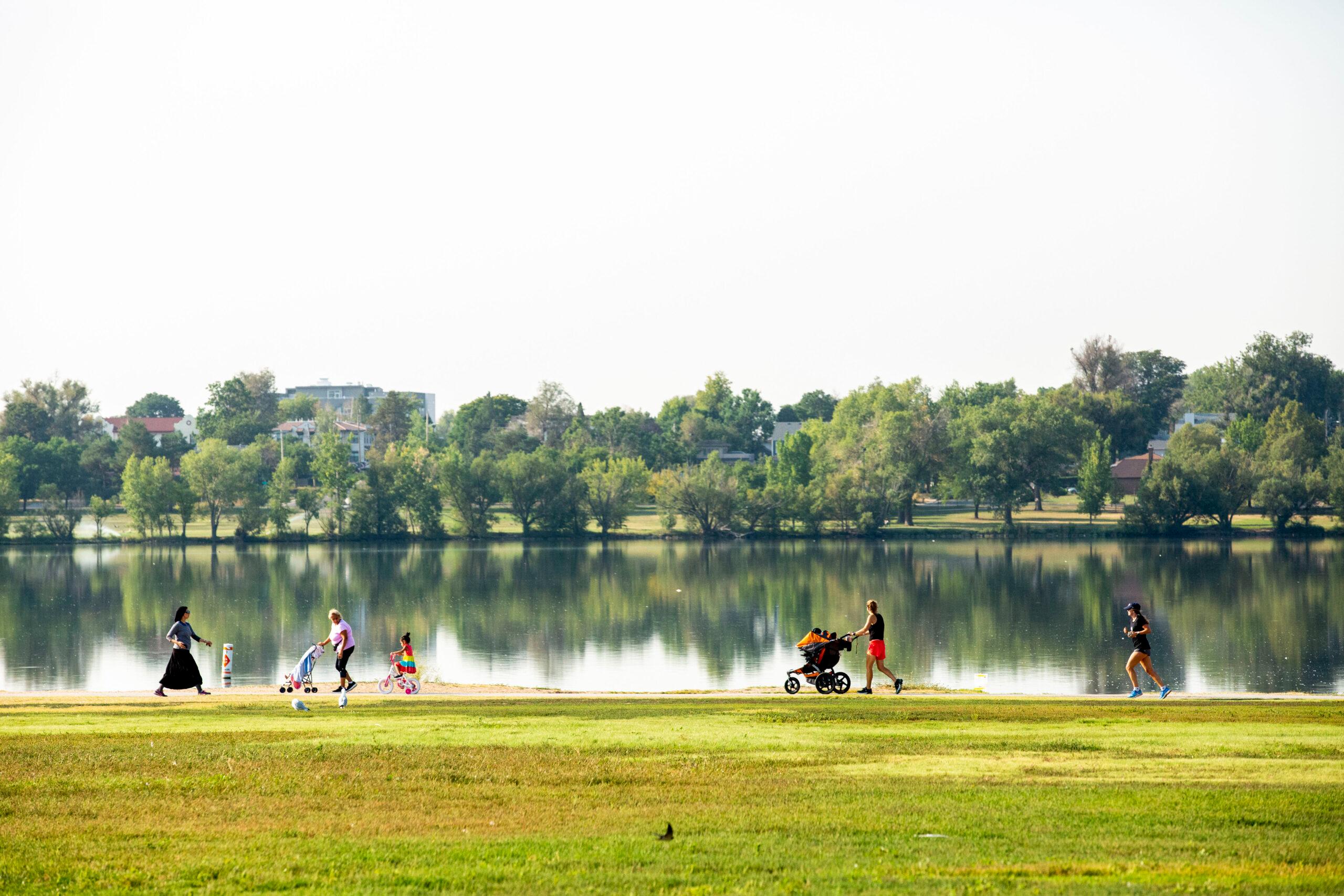
Sloan's is Denver's largest lake at 175 acres, and one of its shallowest, reaching max depths of about 5 feet. Motorized boats are banned for the rest of 2021, but you can still bring a kayak or enjoy some of the better fishing in Denver.
South Platte River, and other waterways

It's no secret that guests are free to kayak and tube this leg of the Platte. Small crafts are welcome. So're fishers. And as inviting as the water might seem on a hot summer day, swimming is technically prohibited here, as in other parts of Denver. You are, however, allowed to wade.
Wading and fishing are allowed at any of these other public creeks and gulches, and you can also bring any small, non-motorized watercraft that'll fit:
- Bear Creek
- Cherry Creek
- Dry Gulch
- First Creek
- Goldsmith Gulch
- Harvard Gulch
- Lakewood Gulch
- Sand Creek
- Sanderson Gulch
- Westerly Creek
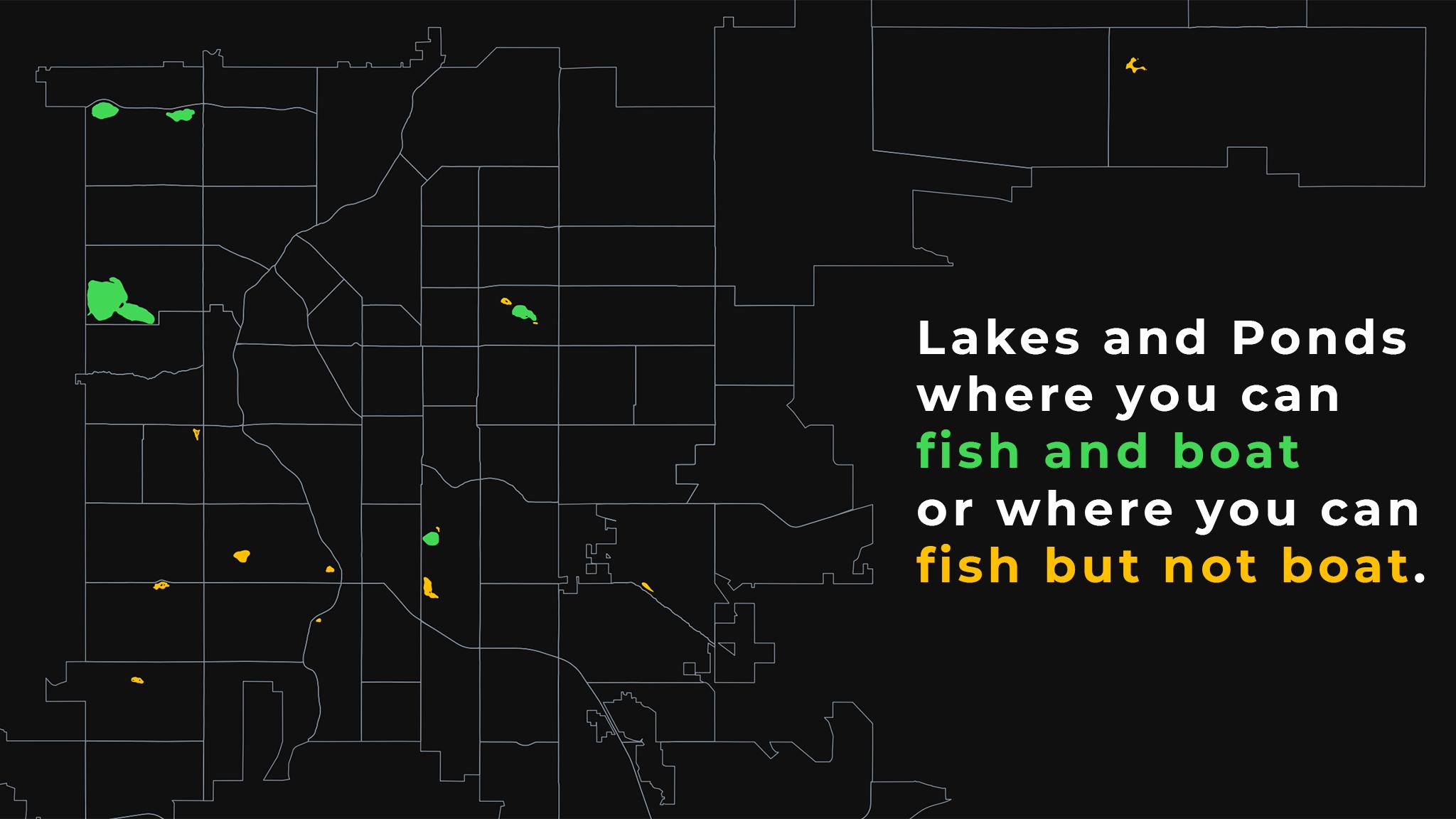
Lakes
You may not be allowed to boat in them, but all of these public lakes, reservoirs and ponds welcome waders and fishers:
- Barnum Lake, Barnum
- Duck Lake, City Park
- Garfield Lake, Westwood
- Grasmere Lake, Washington Park
- Harvey Park Lake, Harvey Park
- Heron Pond, Globeville
- Huston Lake, Athmar Park
- Lily Pond, Washington Park
- Lollipop Lake, Washington Virginia Vale
- Overland Pond, Ruby Hill
- Parkfield Lake, Gateway
- Lily Pond, City Park
- Vanderbilt Lake, Athmar Park













